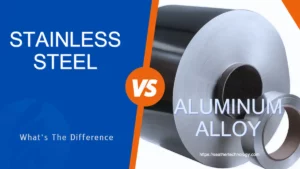The copper alloy is non-magnetic by nature, but it is linked with magnetic for making the magnetic field.
This method is used in power plants to generate electricity. Before understanding the cooper magnetism, it is very important to know about magnetism.
When the electrons in a substance align in the same direction, a magnetic field is created that can attract or repel other materials. Magnetism can be found in many different materials, including metals like iron, nickel, and cobalt. These materials are ferromagnetic, and they are strongly attracted to magnets. Other materials like copper are non-ferromagnetic; however, copper can still be linked with magnetic.
Because copper lacks magnetic characteristics, it is unable to get magnetized in the same way that other metals can. On the other hand, copper particles move when they react with a strong magnetic field. The behavior of organized copper particles in a larger structure can be managed in such a way that their specific movement under the effect of magnetic fields can be utilized in many applications, such as electrodynamics loudspeakers and electric motors.
Copper alloy has no magnetic properties. A magnetic field can be influenced by copper when they come into contact. Copper’s molecular structure contains relatively unstable electrons. When a moving magnetic field passes by, these electrons can be stimulated to form an electric current or when a magnet travels through a coil of copper wire.
Copper has a very low resistance to the flow of electric current and is especially effective when used in electrical wire to transfer current. Copper is also utilized in various applications to generate Eddy currents, which can be employed as a brake or dampening mechanism. According to Faraday’s Law, when a magnet passes over a copper surface, the electrons in the copper surface are excited to form an electrical current.
Electrical eddy currents are very similar to magnetic fields formed by an electric current; when a magnet drives near copper or other metals, electrical eddy currents form nearby, interacting with the magnet’s magnetic field to attract or repel metal objects. Copper is not magnetic; it cannot maintain a magnetic field and is not attracted by a magnet like iron. It is also not strongly repelled by a magnetic field.
Copper alloy shows good conductivity of heat and electricity. As a result, a relative motion that exists between it and a magnetic field will create an electric current in the copper.
Furthermore, the electric current produces a new magnetic field that is opposed to the relative motion of the copper and magnet. This is the basis of the demonstration, in which a cylindrical magnet is dropped down a copper pipe. Yet, its speed is clearly delayed, creating the impression that something inside the pipe has held over the magnet.
Is Copper Magnetic Good For Health?
The copper magnet is not harmful to the human’s health. It is mostly used for joint pain and arthritis pain.
For many years, people have questioned the use of copper magnetic bracelets as a pain relief cure.
After all that, the number of customers who have claimed the healing advantages of copper magnetic bracelets for the relief of carpal tunnel and arthritis pain is too many to ignore.
Copper bracelets with magnets have become an attractive replacement for people who are tired of oral medications and seeking relief, as they may be worn continuously with little to no adverse effects.
Most arthritis sufferers agree that copper magnetic bracelets are safe to wear all the day.
Although producers and fans agree that wearing copper magnetic bracelets may not be a good idea for pregnant women or those who use pacemakers or insulin pumps, copper magnetic bracelets have been considered to be safe for the majority of people.
Types of Magnetic Metals
According to the magnetic fields and atomic structure, there are three main types of metals.
Ferromagnetic metals
The metals that have space for electrons to move freely in their valence shell are known as ferromagnetic metals. Even in the absence of external magnetic fields, these metals are readily attracted to magnets. Iron, cobalt, and neodymium are all examples of Ferromagnetic Metals.
Paramagnetic metals
Aluminum, platinum, and uranium are examples of paramagnetic metals. They have much lower magnetic attraction than ferromagnetic and lose their magnetic qualities in the absence of a magnetic field.
Diamagnetic metals
Diamagnetic metals belong to materials that reject magnetic fields. This is due to a shift in electron orbital spin caused by the presence of an external magnetic field. The metal loses its diamagnetic properties when the magnetic field is removed. Diamagnetic metals include copper, bismuth, and lead.
Is Copper a Magnetic Substance?
Copper is not a magnetic substance because copper possesses an unpaired electron; somebody may assume it has magnetic properties. This is not true in the case of copper.
This is due to how the copper atom organizes itself with other copper atoms.
In a magnetic substance, the atom’s unpaired electrons easily travel from one valence shell to the next. The resulting flow of electrons results in the formation of a magnetic dipole.
Copper atoms behave in an unusual manner. When two or more copper atoms come into contact, their electrons combine to form a cloud of electrons. As a result, the atoms join together to form metallic connections. This causes copper to be diamagnetic, which means it weakly repels magnets.
Copper is not magnetic in terms of the fact that a magnet will stick to something made of copper whenever you hold the magnet over it.
However, copper has some magnetic characteristics. It is particularly relevant in the context of electricity and eddy currents. When a magnet comes into contact with copper, it generates an electrical eddy current. Magnets are attracted to eddy currents.
As a result, a strong enough magnetic field might cause a magnet floating above copper. However, because of its extremely weak magnetic characteristics, copper is not considered magnetic.
Conclusion
In conclusion, copper alloy is not a magnetic metal.
This state is correct in the traditional sense, but it counts as diamagnetic and has the ability to interact with magnets.
Copper is a versatile metal widely used in many industrial applications due to its thermal conductivity. It is used in wiring, transformers windings and motor windings.
If you would like to know more about Cu-ETP C1100 and copper-based alloys, please contact our expert team today.






